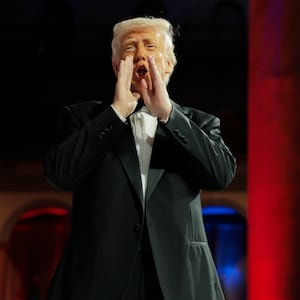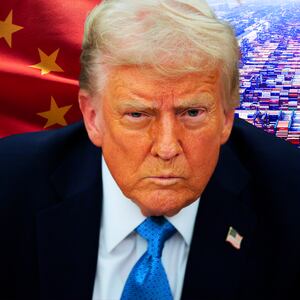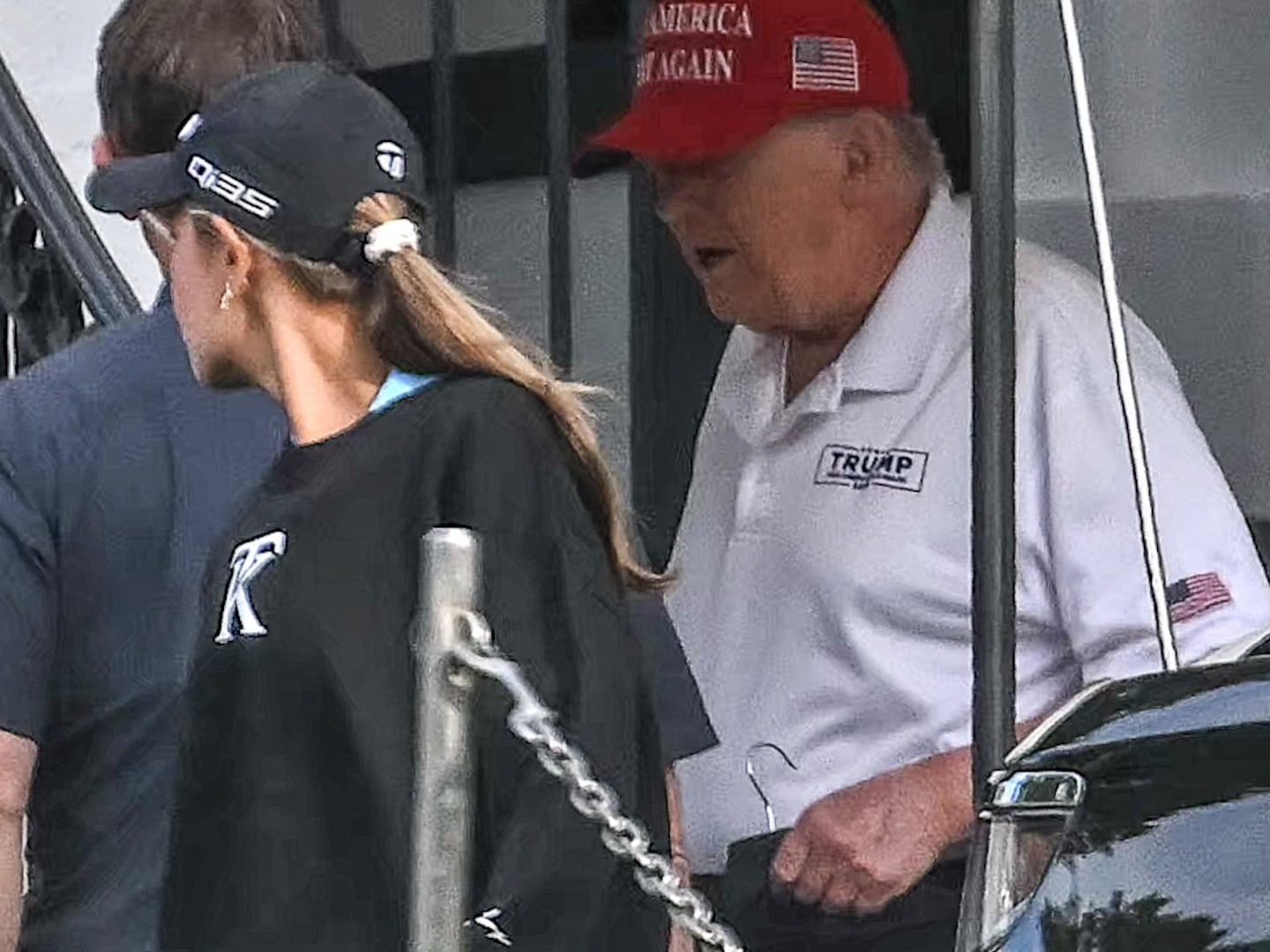President Donald Trump insisted he knows what he’s doing with his “Liberation Day” tariffs even as markets plummeted and comparatively safe assets like Treasury bonds cratered.
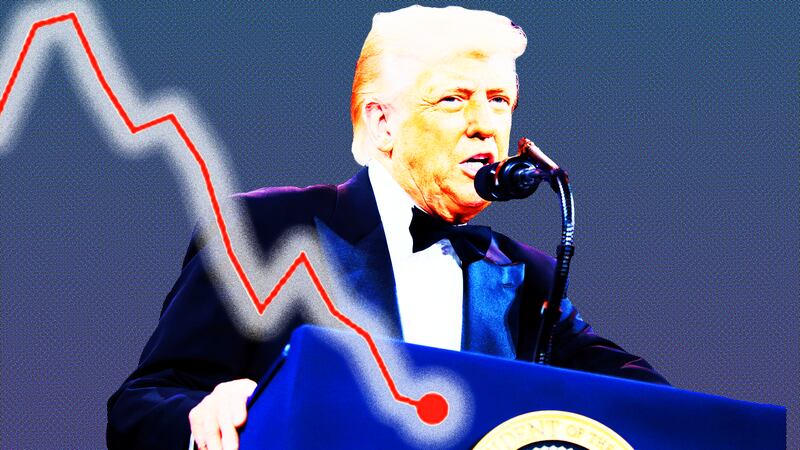
Speaking to the National Republican Congressional Committee on Tuesday night, Trump insisted manufacturing was already pouring back into the country, with companies halting plant construction in Mexico and moving back to former production sites in the U.S.
“I know what the hell I’m doing,” he said.
ADVERTISEMENT
Hours later, his steep tariffs took effect—including a 104 percent levy on Chinese goods—unleashing even more economic carnage after nearly a week of market losses. China also retaliated Wednesday by slapping an 84-percent tariff on U.S. goods, roiling global markets.
“The U.S. escalation of tariffs on China is a mistake upon mistake, severely infringing upon China’s legitimate rights and interests, and seriously damaging the multilateral trading system based on rules,” China’s State Council Tariff Commission said in a statement unveiling its retaliation.
U.S. Treasuries, which are largely considered the world’s safest asset, suffered a vicious selloff Wednesday that temporarily drove the 10-year yield up to 4.51 percent and the 30-year yield above 5 percent.
The 10-year yield settled at 4.37 percent, up from 3.9 percent earlier in the week, and could be a sign that the world no longer sees U.S. Treasuries as the global fixed-income safe haven, experts told the Financial Times.
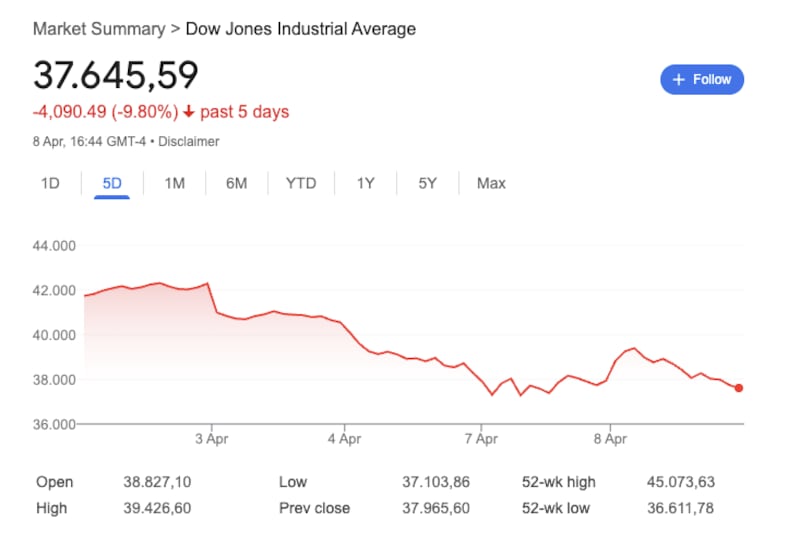
Stocks also fell in Europe and Asia, with Japan’s Nikkei 225 down 3.9 percent and the Korea Stock Exchange down 1.7 percent. The MSCI Asia Pacific Index fell 1.25 percent to a 52-week low. Europe’s FTSE 100 fell 2.2 percent and the DAX was down 3 percent as of mid-morning local time.
U.S. futures suggested the domestic markets were also on track to take another beating, with futures tied to the S&P 500 down 1.66 percent, the Nasdaq-100 down 1.42 percent and the Dow Jones Industrial Average down 1.89 percent shortly after China’s announcement.
Over the past week, the S&P 500 suffered its worst losses since its creation in the 1950s, Reuters reported, as it nears bear market territory 20 percent below its most recent high. The Nasdaq is already officially in a bear market.
On April 2, Trump announced 10 percent universal tariffs—a tax paid by American companies, with the costs typically passed on to consumers—on all imports, plus additional duties of up to 50 percent on products from countries that have large trade deficits with the U.S.
The new tariffs are on top of existing ones, meaning products from China for example now face a cumulative tariff rate of 104 percent. Before announcing its retaliatory tariffs on U.S. goods, China had vowed to take “resolute and effective measures” to protect its economy, CNN reported.
“The United States is still imposing arbitrary tariffs on China and relentlessly applying extreme pressure. China firmly opposes and will never accept such domineering and bullying behavior,” Chinese Foreign Ministry spokesperson Lin Jian told a regular news conference.
“If the U.S. disregards the interests of both countries and the international community and insists on waging a tariff war and trade war, China will fight to the end,” he added.
The investment bank JP Morgan now says there’s a 60 percent chance the global economy will enter a recession by the end of the year. With a recession hitting consumer sentiment and stock losses wiping out client wealth, even luxury goods companies on edge, Bloomberg reported.
Depending on which Trump administration official you ask, the tariffs are either short-term or long-term.
They’re either intended to bring manufacturing back to the U.S., or to force other countries to raise the prices of their goods.
They’re either going to generate $6 trillion of highly regressive revenue over the next 10 years, or they’ll be gone as soon as enough world leaders come groveling.
“I know what I’m doing,” Trump repeated to the NRCC Tuesday. “And you know what I’m doing too. That’s why you voted for me.”

